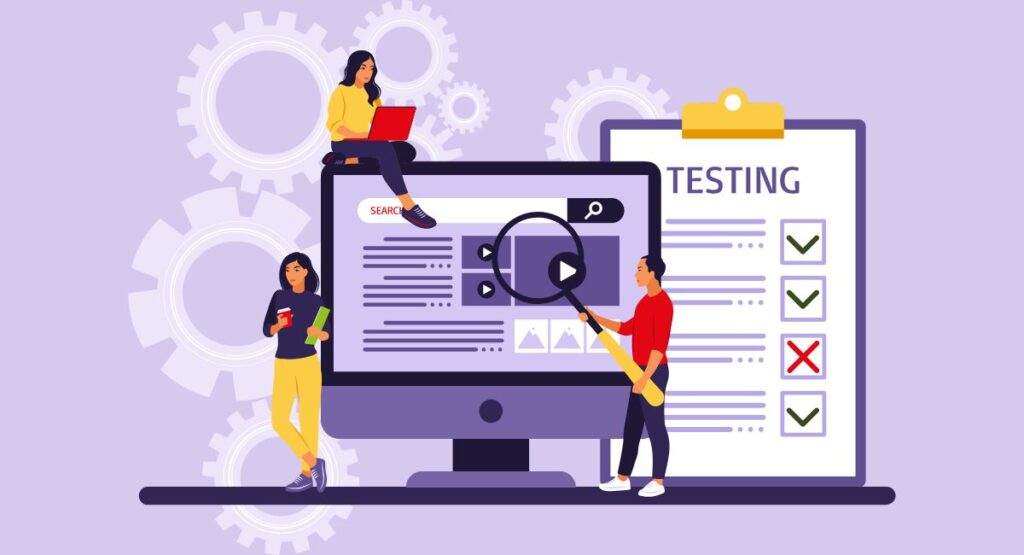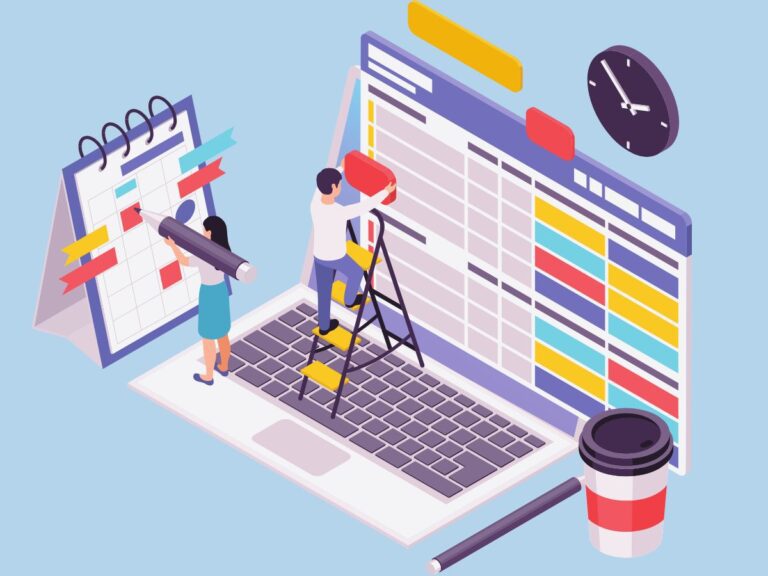How To Create Content Strategy for A Blog That’s Effective
Definition of content strategy
Content strategy involves planning, developing, and managing content for a specific audience or purpose. It consists of identifying the content’s goals and objectives, determining the target audience, and creating a plan for producing, publishing, and promoting it. A content strategy helps to ensure that the content produced aligns with the overall goals and objectives of the organization and effectively meets the target audience’s needs.
Importance of a content strategy for a blog
A blog is essential for building and engaging an audience, and a content strategy helps ensure that the content produced effectively achieves this goal. A content strategy can ensure that the content produced is aligned with the overall business goals and objectives and effectively meets the target audience’s needs.
By creating a content strategy, a blogger can ensure that their content is consistent, high-quality, and effective in achieving the desired outcomes. A content strategy can also help a blogger to save time and resources by identifying the most effective channels for promoting and distributing the content and measuring the performance of the content over time.
Additionally, having a content strategy in place helps keep the blogger focused, ensuring that their efforts are directed towards specific goals and objectives rather than wasting time and resources on irrelevant or ineffective content.
A content strategy is an essential element of a successful blog, helping to ensure that the content produced aligns with the overall goals and objectives of the organization and effectively meets the target audience’s needs.
A blogger can save time and resources by creating a content strategy, focusing on specific goals and objectives, and producing high-quality, consistent, and compelling content that achieves desired outcomes.

Defining your audience
Identifying your target audience
The first step in creating a content strategy is identifying your target audience. This includes identifying the demographics of the people you want to reach, such as their age, gender, education level, income, location, and interests and needs.
One way to identify your target audience is to use analytics tools to look at the demographics of your current audience and their behavior on your website, such as which pages they visit and how long they stay on your site.
Another approach is to conduct surveys, focus groups, or interviews with your current audience, to understand their needs and preferences. Additionally, you can look at your competitors’ audience and try to understand how they appeal to them.
Understanding their needs and interests
Once you have identified your target audience, the next step is understanding their needs and interests. This includes researching the topics and themes most relevant and vital to them, as well as their pain points and challenges. Understanding the audience’s needs and interests will inform the topics and themes you choose for your content and ensure that it is relevant and valuable to them.
Creating reader personas
A reader persona is a semi-fictional representation of your ideal reader based on your research and understanding of your target audience. Creating reader personas can help you better understand your target audience and create content tailored to their needs and interests. A reader persona should include demographics, goals, pain points, and the decision-making process.
Defining your audience is an essential step in creating a content strategy. Identifying your target audience, understanding your reader’s needs and interests, and developing buyer personas can help you create content tailored to your target audience and more likely to resonate with them. This will improve the chances of your content being read and shared and ultimately lead to a more successful blog.

Setting goals and objectives
Identifying the purpose of your blog
Before setting goals and objectives for your content strategy, it is crucial to understand the purpose of your blog. The purpose of your blog can be different things, like increasing brand awareness, driving sales, building a community, providing educational or informative content, and many more.
Identifying the purpose of your blog will ensure that your content strategy aligns with your overall business goals and that your content is effectively meeting the needs of your target audience.
Setting specific, measurable, achievable, relevant, and time-bound (SMART) goals
Once you have identified the purpose of your blog, the next step is to set specific, measurable, achievable, relevant, and time-bound (SMART) goals for your content strategy. SMART goals are specific, measurable, achievable, relevant, and time-bound and help to ensure that your content strategy is focused on achieving particular outcomes.
For example, a SMART goal for a blog to increase brand awareness might be: “To increase website traffic by 25% within the next six months through the creation of high-quality, informative content that addresses the needs of our target audience.”
Aligning your content strategy with your overall business goals
It is vital to ensure that your content strategy aligns with your overall business goals. This includes taking into account the goals and objectives of your organization. The needs and interests of your target audience. Aligning your content strategy with your overall blog goals will help ensure that your content effectively meets your target audience’s needs and supports your organization’s overall goals.
Setting goals and objectives for your content strategy is essential in creating an effective content plan for your blog. Identifying the purpose of your blog, setting SMART goals, and aligning your content strategy with your overall business goals will help ensure that your content effectively meets your target audience’s needs and supports your organization’s overall goals. This will ultimately lead to a more successful blog.

Conducting a content audit
Reviewing existing content on your blog
Conducting a content audit is essential in creating an effective content plan for your blog. A content audit involves reviewing all of the existing content on your blog, including blog posts, articles, videos, images, infographics, and other types of content. This review should identify the topics and themes covered, the content’s quality, and performance regarding engagement, shares, and conversions.
Identifying gaps in your content
During the content audit, you should also identify any gaps in your content. This can include identifying topics and themes that need to be covered or areas where the quality of the content could be better. Identifying these gaps can help you create a content plan that addresses these areas and ensures that you provide your target audience with the information they need and want.
Analyzing the performance of existing content
After reviewing your existing content, it’s crucial to analyze the performance of the content. This can be done by looking at engagement (e.g., views, comments, shares), conversion rates, and bounce rates. Analyzing the performance of your existing content can help you identify which content types are most effective and which are not and make decisions about what content to focus on in the future.
Conducting a content audit is essential in creating an effective content plan for your blog. By reviewing existing content, identifying gaps in your content, and analyzing the performance of existing content, you can better understand what is working and what is not and make informed decisions about what types of content to focus on in the future. This will ultimately lead to a more successful blog.

Developing a content calendar
Planning the topics and themes for your content
After conducting a content audit and setting goals and objectives for your blog, the next step is to plan the topics and themes for your content. This includes determining the topics and themes covered in your content and the format that the content will take (e.g., blog posts, articles, videos, images, infographics, etc.). This planning should be based on the research and analysis you have done on your target audience and your goals and objectives for your blog.
Scheduling the publication of your content.
Once you have planned the topics and themes for your content, the next step is to schedule the publication of your content. This includes determining when each piece of content will be published and how frequently new content will be published.
Organizing your content’s publication can help ensure that you provide your target audience with a steady stream of new and relevant content and meet your blog goals and objectives.
Creating a system for tracking and measuring the performance of your content
It is vital to track and measure the performance of your content to understand what is working and what is not. This can include tracking metrics such as engagement (e.g., views, comments, shares), conversion rates, and bounce rates.
Additionally, you should create a system for tracking and measuring the performance of your content. This can be done using analytics tools like Google Analytics or creating a spreadsheet to track your progress. This will enable you to make informed decisions about what content to focus on in the future and ensure that your content meets your goals and objectives.
Developing a content calendar is essential in creating an effective content plan for your blog. Planning the topics and themes for your content. Scheduling the publication of your content and creating a system for tracking and measuring the performance of your content. You can ensure that your content meets your target audience’s needs and supports your organization’s overall goals.
This will ultimately lead to a more successful blog. Additionally, by tracking and measuring the performance of your content, you can make informed decisions about what types of content to focus on in the future and make adjustments as needed to ensure that your content strategy is effective and achieving the desired results.

Creating a content production process
Developing a system for creating, editing, and publishing content
Once you have a content calendar in place and a system for tracking and measuring the performance of your content, the next step is to develop a plan for creating, editing, and publishing content. This includes identifying the tools and processes used to create, edit, and publish content and establishing tone, style, and formatting guidelines.
Having a well-defined and consistent content production process in place can help ensure that all of the content created for your blog is high quality and consistent in tone and style.
Defining roles and responsibilities for team members
It is crucial to clearly understand the roles and responsibilities of the different team members involved in the content production process. This can include identifying who is responsible for creating, editing, and publishing content, as well as who is responsible for reviewing and approving content. Defining roles and responsibilities ensures everyone knows what is expected of them and that the content production process runs smoothly.
Establishing a workflow for content review and approval
- Establishing a workflow for content review and approval is essential in creating an effective content plan for your blog.
- A workflow should be established that includes clear guidelines for how content should be reviewed and approved and who is responsible for this process.
- This could include a process for input and feedback from different stakeholders, such as subject matter experts and key stakeholders within the organization.
- A content review and approval workflow can ensure that all content is high quality and meets the standards and guidelines established for your blog.
Creating a content production process is essential to creating an effective content plan for your blog. By developing a system for creating, editing, and publishing content, defining roles and responsibilities for team members, and establishing a workflow for content review and approval, you can ensure that all of the content that is created for your blog is of high quality, consistent in terms of tone and style, and meets the standards and guidelines established for your blog. This will ultimately lead to a more successful blog.

Promoting and distributing your content
Developing a content promotion plan
Once you have a content calendar and a system for creating, editing, and publishing content, developing a content promotion plan is vital to ensure your content reaches its intended audience.
This includes identifying the specific channels and tactics that will be used to promote your content, such as social media, email marketing, guest blogging, and paid advertising.
Additionally, it’s essential to consider the timing and frequency of your content promotion efforts, ensuring that they align with the publication schedule of your content and the interests of your target audience.
Utilizing social media and other channels to promote your content
Social media platforms can be powerful tools for promoting your content. Each platform has its own strengths and weaknesses, and it’s essential to choose the right one(s) based on your target audience and the type of content you’re creating.
For example, visual-heavy content can be promoted on Instagram and Pinterest, while longer-form content may be better suited for LinkedIn and Twitter. Additionally, other channels, such as email marketing, guest blogging, and paid advertising, are essential to reach a wider audience and achieve your goals.
Measuring the effectiveness of your content promotion efforts.
It’s essential to track and measure the effectiveness of your content promotion efforts to understand what is working and what is not. Metrics such as click-through rate (CTR), engagement (likes, shares, comments), and conversions (sales, leads) can be used to measure the effectiveness of your content promotion efforts.
Tools such as Google Analytics and social media analytics can help you understand which channels and tactics drive the most traffic and engagement to your blog. By measuring the effectiveness of your content promotion efforts, you can make data-driven decisions about where to focus your efforts in the future and make adjustments as needed to achieve your goals.
Promoting and distributing your content is essential in creating an effective content plan for your blog. By developing a content promotion plan, utilizing social media and other channels to promote your content, and measuring the effectiveness of your efforts, you can ensure that your content reaches its intended audience and achieves its desired impact. This will ultimately lead to a more successful blog.

Wrapping Up – Content Strategy
In this blog post, we discussed the importance of having a content strategy for your blog and the steps involved in creating an effective content plan.
We started by defining a content strategy and why it is essential for a blog. Then we moved on to identifying your target audience and understanding your readers’ needs and interests, setting goals and objectives, conducting a content audit, developing a content calendar, creating a content production process, and promoting and distributing your content.
Take action and implement a content strategy for your blog.
The key takeaway from this blog post is that having a content strategy can help ensure that your blog meets your target audience’s needs and supports your organization’s overall goals. We encourage you to take the information covered in this post and use it to create a content strategy for your blog.
Implementing a content strategy will take time and effort, but the results are worth it in the long run. By following the steps outlined in this post and adjusting as needed, you can create an effective content plan that leads to a more successful blog.
In conclusion, creating an effective content plan for your blog is essential for reaching your target audience, engaging them, and achieving your goals. Following the steps outlined in this post, you can develop a content strategy tailored to your specific needs and objectives and ultimately lead to a more successful blog.
We hope that this post has provided you with valuable insights and actionable advice, and we encourage you to take the following steps to implement a content strategy for your blog.







